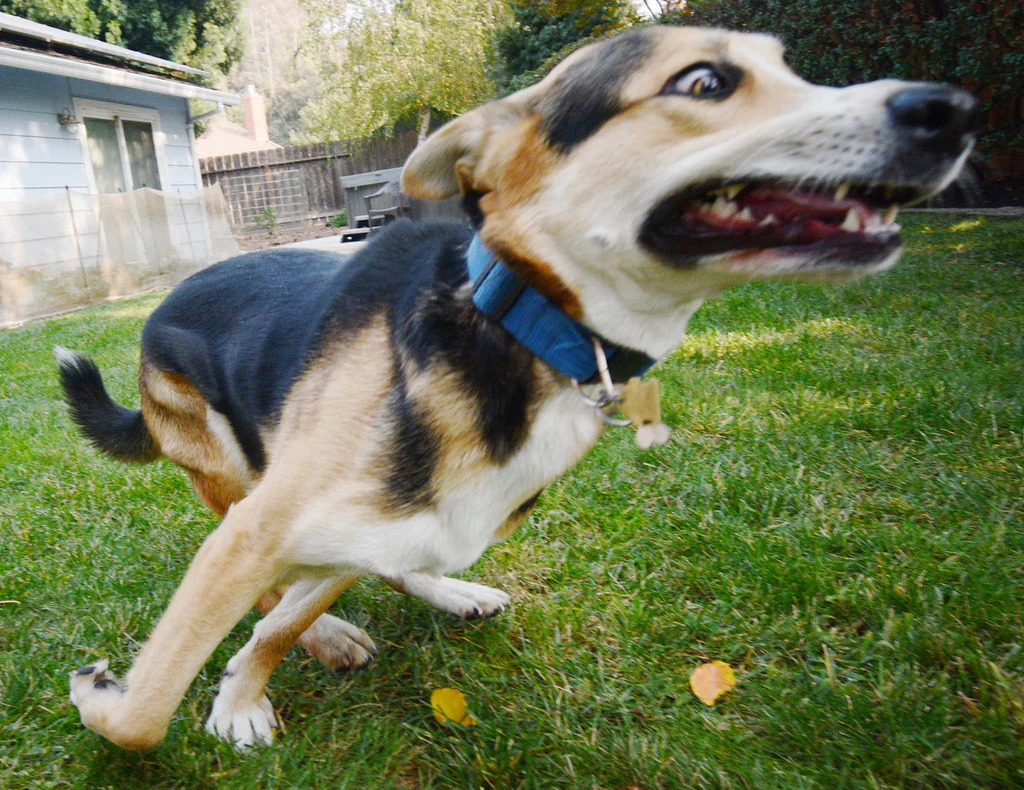
Have you ever witnessed your beloved pet, whether a feline or canine companion, suddenly transform into a whirlwind of energy, racing around the house with unbridled enthusiasm? This peculiar behavior, commonly known as “pet zoomies,” is a fascinating phenomenon that has puzzled pet owners and animal behaviorists alike.
The Origins of Pet Zoomies
The exact cause of pet zoomies remains a mystery, but several theories have emerged to explain this energetic outburst. One theory suggests that zoomies are a form of release valve for pent-up energy, particularly in dogs. When dogs accumulate excess energy, whether from suppressed excitement, boredom, or confinement, they may unleash this energy in a sudden burst of activity.

Another theory attributes zoomies to sudden bursts of endorphins, the body’s natural feel-good chemicals. When dogs engage in playful activities, such as chasing toys or wrestling with their owners, their endorphin levels rise, leading to a surge of energy and excitement.
In cats, zoomies may be triggered by changes in their environment, such as a new piece of furniture or the introduction of a new pet. These changes can induce stress or anxiety in cats, leading to a release of pent-up energy through zoomies.
The Characteristics of Pet Zoomies
Pet zoomies typically manifest in a sudden burst of energy, often accompanied by running, jumping, and spinning. Dogs may engage in laps around the house, leaping over furniture, and chasing their tails. Cats, on the other hand, may dart around rooms, scale curtains, and pounce on unsuspecting objects.

These energetic episodes usually last for a few minutes, but they can extend for longer periods in some cases. Once the energy surge subsides, pets often appear calm and satisfied, as if they have released their pent-up energy and are ready to rest.
Preventing Pet Zoomies
While zoomies are a natural behavior in pets, they can sometimes be disruptive or even dangerous, especially if they occur in inappropriate settings. To minimize the occurrence of zoomies, pet owners can implement several strategies:
- Provide Regular Exercise: Ensure that your pet receives adequate daily exercise to help them release pent-up energy in a controlled manner. Regular walks, playtime, and interactive games can effectively prevent zoomies.
- Create a Calming Environment: Maintain a calm and stress-free home environment for your pet. Avoid sudden changes in routine or the introduction of new objects that might trigger anxiety.
- Address Underlying Issues: If your pet’s zoomies seem excessive or are accompanied by other behavioral changes, consult with a veterinarian or animal behaviorist to rule out any underlying medical or behavioral issues.
Enjoying Pet Zoomies with Caution

While pet zoomies can be a source of amusement and entertainment, it’s important to exercise caution during these energetic episodes. Keep an eye on your pet to ensure they don’t injure themselves or cause damage to your home. If your pet’s zoomies become destructive or disruptive, gently redirect their energy towards more suitable activities.
Conclusion
Pet zoomies, though sometimes unpredictable and disruptive, are a natural part of a pet’s behavior. By understanding the underlying causes and implementing preventive measures, pet owners can learn to manage this energetic outburst and even find joy in witnessing their furry friends unleash their playful spirits. After all, pet zoomies are a testament to the vitality and zest for life that our beloved companions bring into our lives.
Read More
- Books On How To Deal With Grief
- Decoding the Fascinating World of Talking Pet Birds
- Pet Cremations Near Me
- What Pet Bird Should I Get?
Frequently Asked Questions (FAQs)
1. Are pet zoomies harmful?
In most cases, pet zoomies are harmless and simply a way for pets to release pent-up energy. However, if zoomies occur frequently or are accompanied by destructive behavior, it’s important to consult with a veterinarian or animal behaviorist to rule out any underlying issues.
2. How can I help my pet calm down after zoomies?
After a bout of zoomies, provide your pet with a quiet and calm environment to rest and recuperate. Avoid overstimulating them with additional playtime or attention. A gentle massage or a soothing voice can help them relax.
3. Are zoomies more common in certain breeds?
While all breeds of dogs and cats can experience zoomies, some breeds, such as high-energy dogs like Huskies and Border Collies, may be more prone to them due to their high levels of activity.
4. Can zoomies be a sign of underlying health issues?
In rare cases, excessive zoomies could indicate an underlying medical condition, such as thyroid problems or neurological disorders. If you suspect a health issue, consult with your veterinarian for proper diagnosis and treatment.
5. Can I train my pet to stop having zoomies?
While it’s difficult to completely eliminate zoomies, you can train your pet to direct their energy.
- Why do dogs get zoomies?
There are several possible reasons why dogs get zoomies. Some common causes include:
- Pent-up energy: Dogs that don’t get enough exercise may have pent-up energy that they release in a burst of zoomies.
- Excitement: Dogs may also get zoomies when they are excited, such as when they come home from the park or when they see their owner.
- Boredom: Dogs that are bored may also get zoomies as a way of entertaining themselves.
- Stress: Some dogs may get zoomies as a way of relieving stress.
- Medical conditions: In some cases, zoomies may be a sign of an underlying medical condition, such as hypoglycemia or thyroid problems.
- How to stop my dog from having zoomies
There is no foolproof way to stop your dog from having zoomies, but there are some things you can do to try to reduce the frequency and intensity of their episodes. These include:
- Provide plenty of exercise: Dogs that get enough exercise are less likely to have pent-up energy that they need to release through zoomies. Aim for at least 30 minutes of exercise per day.
- Create a predictable routine: Dogs thrive on routine, so try to keep their daily schedule as consistent as possible. This will help to reduce stress and anxiety, which can trigger zoomies.
- Avoid overstimulation: Don’t overstimulate your dog with too much playtime or attention, especially before bedtime. This can lead to an overabundance of energy that they may release through zoomies.
- Provide a calming environment: Make sure your dog’s home environment is calm and relaxing. This means avoiding loud noises and sudden changes.
- Redirect their energy: If your dog starts to get zoomies, try to redirect their energy to a more appropriate activity, such as playing fetch or going for a walk.
- Consult with a veterinarian: If you are concerned about your dog’s zoomies, or if they seem excessive or are accompanied by other behavioral changes, consult with your veterinarian. They can help you to rule out any underlying medical conditions.
Other Related Answers
- Are zoomies normal for cats?
Yes, zoomies are normal for cats. Just like dogs, cats can also experience pent-up energy, excitement, boredom, or stress, which can manifest in bursts of energetic activity.
- What causes cat zoomies?
The exact cause of cat zoomies is not fully understood, but several factors may contribute, including:
- Changes in environment: Cats may get zoomies when they are introduced to a new environment or when there are changes in their routine.
- Playful instincts: Cats are naturally playful animals, and zoomies can be a way of expressing their playful instincts.
- Release of energy: Cats may also get zoomies as a way of releasing pent-up energy, especially if they have been confined for a long period of time.
- Stress or anxiety: Some cats may experience zoomies as a way of relieving stress or anxiety.
- Can zoomies be harmful to pets?
In most cases, zoomies are not harmful to pets. However, if they occur frequently or are accompanied by destructive behavior, it is important to consult with a veterinarian or animal behaviorist to rule out any underlying issues.


